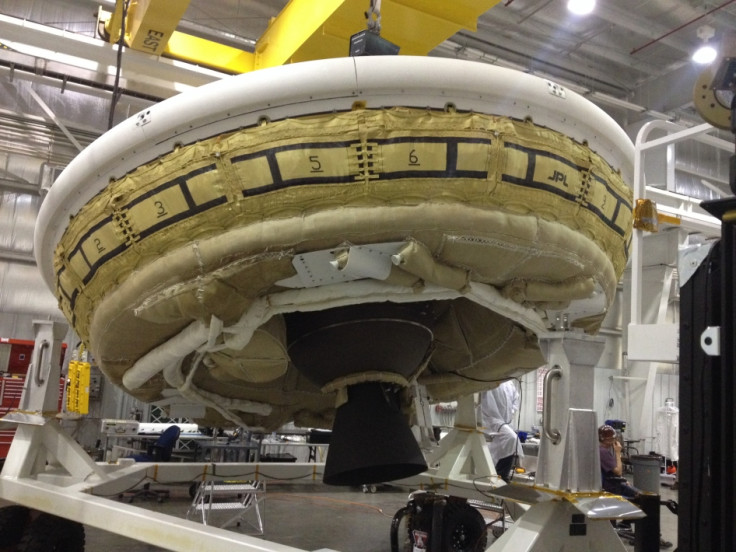Nasa: Supersonic 'Flying Saucer' Test Flights Prepared for Mars Mission
Nasa is making the final preparations for a test flight for its supersonic flying saucer, that could help astronauts explore the surface of Mars.
The Low-Density Supersonic Decelerator is designed to produce a lot of drag, in order to help slow the descent of heavy payloads through the thin Martian atmosphere, so spacecraft can land safely on the Red Planet.
The tests, which will simulate the "entry, descent and landing speeds a spacecraft would be exposed to when flying through the Martian atmosphere, are scheduled to take place between 3 and 13 June at the US Navy's Pacific Missile Range Facility in Kauai, Hawaii.
The LDSD project, led by Nasa's Jet Propulsion Laboratory, is developing a 100ft-wide parachute and two devices, called Supersonic Inflatable Aerodynamic Decelerators (SIADs).
The test launch will begin with a balloon ride, to carry the vehicle up to around 120,000ft, where the saucer will be deployed to set off its booster rocket, to shoot up to 180,000ft. At this point, the vehicle will travel at nearly four times the speed of sound, at Mach 4.

With enough height, the vehicle can test out the inflatable tube, which produces drag to slow the craft down, and parachute, which helps ease the craft back down to the ground.
The test will give team members a chance to look at how the SIADs and the parachute will perform in a Mars-like environment, where the atmosphere is one percent as dense as the atmosphere on Earth.
Ian Clark, the LDSD principal investigator, told CNET: "This first test is a true experimental flight test. Our goal is to get this first-of-its-kind test vehicle to operate correctly at very high speeds and very high altitudes."
Curiosity is the heaviest object that has ever landed on Mars, but the LDSD project hopes to improve descent and landing capabilities to accommodate future human missions.
Nasa's LDSD carries several onboard cameras. It is expected that video of selected portions of the test, including the rocket-powered ascent, will be downlinked and streamed live to several Nasa websites, including Nasa television and Ustream.
"We are pushing the envelope on what we know," Clark said, as reported by Space.com. "We are accepting higher risk with these test flights than we would with a space mission, such as the Mars Science Laboratory (the official name for Curiosity's mission)."
"We will learn a great deal even if these tests, conducted here in Earth's atmosphere at relatively low cost, fail to meet some of the mission objectives."
The agency plans to conduct two more test flights from Hawaii in the summer of 2015.
© Copyright IBTimes 2025. All rights reserved.






















